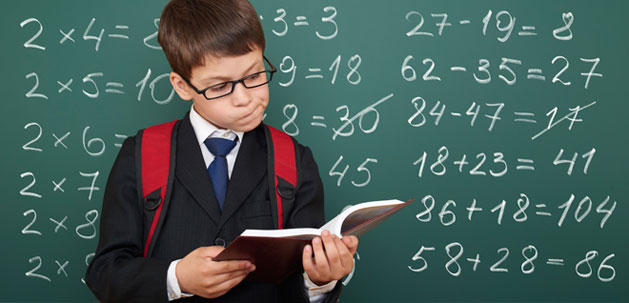

Combine amazing children's literature with math. Use this list of books to engage students in creative project work that combines reading, writing, and math.
Have students write their own story about a geometric shape. Using the ideas in the book, encourage them to make connections to where the shape is found in the real world.
In this fun story, the reader sees dots incorporated into objects, as they count from one to ten. For example, "2 dots can make the eyes of a fox, or the eyes of keys that open locks."

Students create and count a number of black dots, arranging them and creating supporting illustration to transform them into an object. Using the ideas in the book, encourage them to make connections to where the shape is found in the real world.
Have students tell their own grouchy animal story over the course of a single day to demonstrate their understanding of elapsed time.
Have students write their own stories about the problems they encounter during a typical school day or the problems encountered by a fire fighter, police officer, doctor, etc.
Have students compose images from 2 dimensional shapes and complete a sentence that describes their composite to create their own version of the book. (lesson plan)

Have students create their own counting fable using scenes and characters from familiar stories they have read. Print their stories to place in classroom library.
Explore multiplication with this fun book. Then, have students combine artwork and text to write their own multiplication stories.
Have students write and illustrate their own Five Creatures story using the members of their family. Print the files as a booklet to take home or export as an HTML storybook.
Have students create their own simple rhymes to help them memorize basic facts. Students may use stickers and paint tools to illustrate each rhyme.
Have students create their own unique counting book with patterns using stickers and pictures. Student may publish their stories as short movies to share with others.
Have students choose a daily concept like making lunch or time spent on homework to illustrate daily fractions found in the day. Student can create an HTML project to share with others.
Have students write their own fractional stories. Support them by giving their stories a context you can work together to explore such as a Halloween activies or springtime. (lesson plan)
Have students write and illustrate their own math rhyming riddles. Combine all of the class riddles into one book and export to HTML to share online.

Have students create their own math limerick poem for students to share. Compile each student’s poem as a class book.
Have students create their own comic strip using basic money concepts for counting and making change. Other books in this series can help students explore math through travel, cooking, sports, and more!
Have students create a step-by-step guide for problem solving. This guide could be shared with others for future problem solving situations.

Follow us on Instagram for daily inspiration

Create a thought web, cluster, flowchart, or other graphic organizer for a lesson
8 first projects to get students using technology
Creative, digital book reviews
Fun and powerful ideas with animated characters

Wixie
Share your ideas, imagination, and understanding through writing, art, voice, and video.

Rubric Maker
Create custom rubrics for your classroom.

Pics4Learning
A curated, copyright-friendly image library that is safe and free for education.

Wriddle
Write, record, and illustrate a sentence.

Get creative classroom ideas delivered straight to your inbox once a month.
Topics